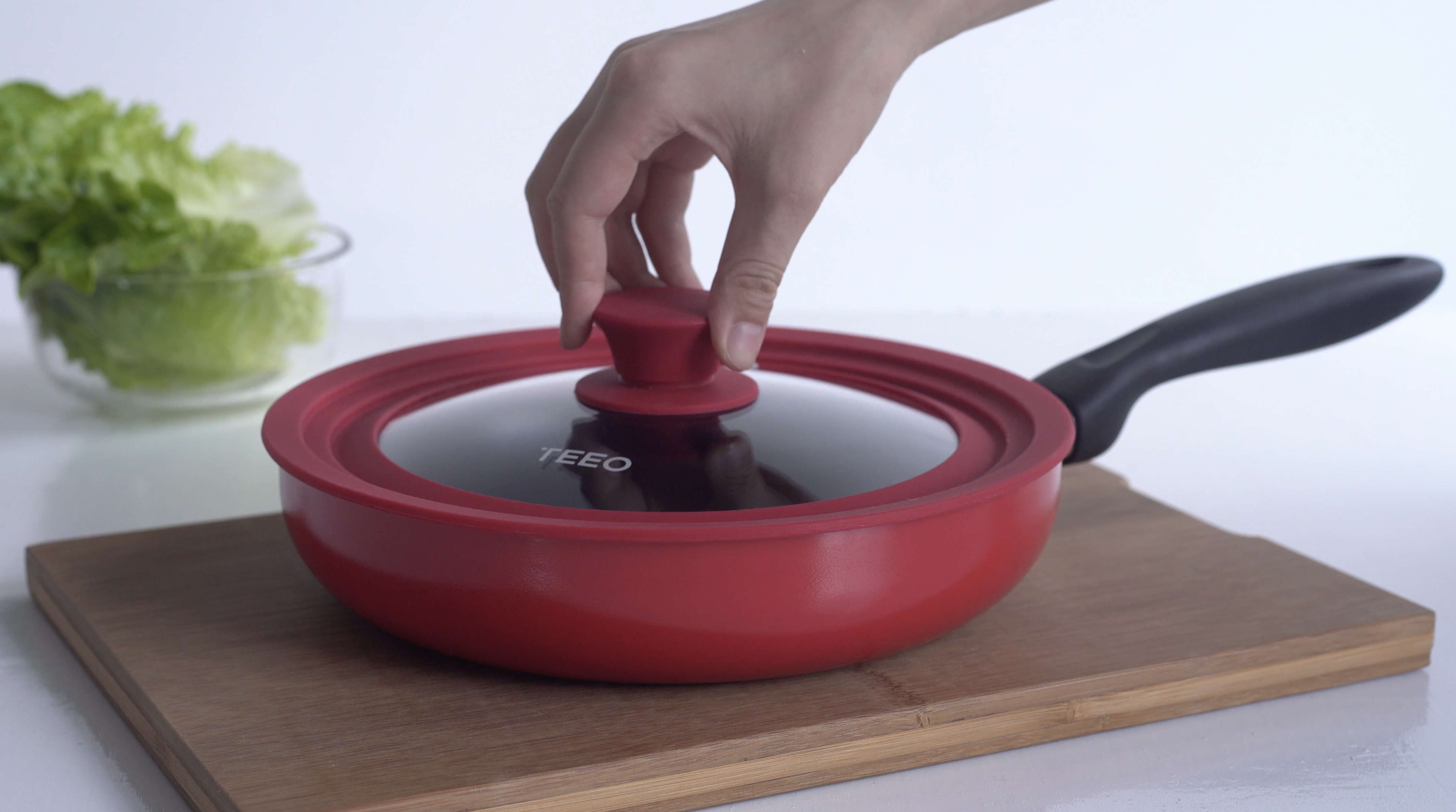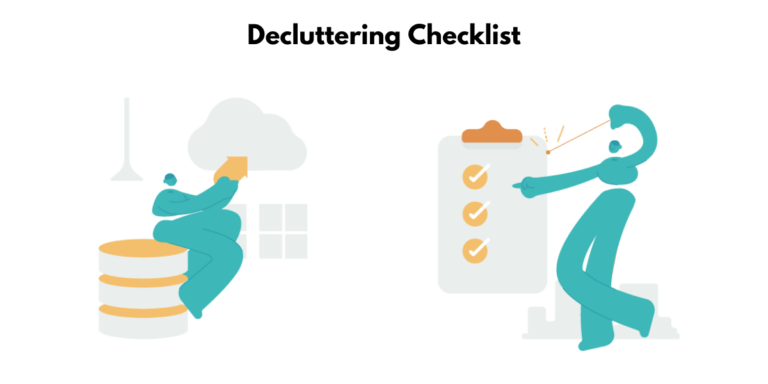Looking For a Frying Pan With a Lid
A frying pan with lid can make cooking more enjoyable and easier to clean up with less risk of scorching food or breaking lids, which makes it perfect for those who don’t like to cook but still want an easy way to work one dish at a time on their stovetop without having to transfer things from pot-to-pan constantly. So what does this mean?
A lid for your pots and pans can help you be more organized in the kitchen.
A universal lid helps to keep food from spilling out of a pan or pot when it is used on any stovetop, from electric ranges to outdoor barbecues. It also has a little hole that fits over the handle so that nothing gets caught on it while cooking and burns up!
What are the different types of frying pans?
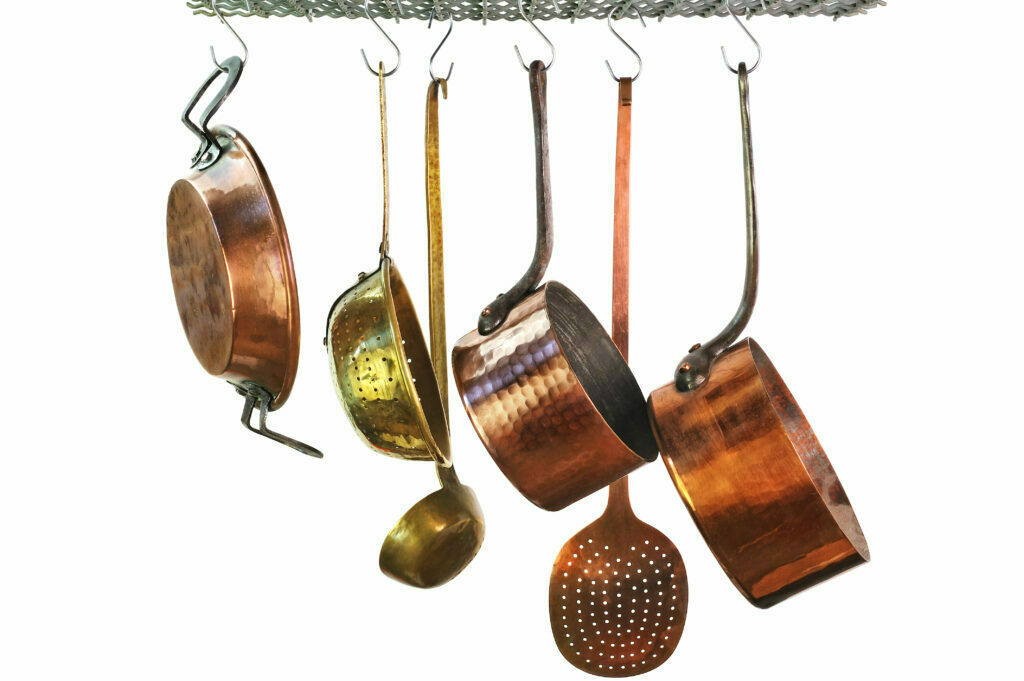
There are many different types of frying pans on the market, and it cannot be easy to know which one to choose. A fryer pan is used for frying food and typically has a flat bottom and flared sides. The best sauté pan is similar to a frying pan but has deeper sides and is better suited for cooking food over high heat. Woks are circular with a deep well and are used for cooking food in a continuous motion.
What are the different materials used to make frying pans?
Stainless steel
Stainless steel is a popular choice for frying pans because it is easy to clean and offers heat distribution. However, it is important to note that stainless steel pans can be a bit more difficult to control the heat, so it is important to have different brands of frying pans in mind when choosing one.
Ceramic
Ceramic frying pans are also popular because they offer even heat distribution. However, they can be more difficult to clean than stainless steel frying pans.
Aluminum
Aluminum frying pans are a good choice if you are looking for an inexpensive option. However, aluminum can react with certain foods, so it is important to research this before purchasing an aluminum fry pan.
What are the features of a good frying pan?
There are a few things to consider when choosing a frying pan with lid. First, you’ll want to ensure that the pan has a non stick coating. This will make cooking easier with less oil and make cleanup quick and easy. Second, you’ll want to choose a scratch-resistant pan that heats up quickly and evenly. Finally, you’ll want to ensure that the oven safe skillet can be heated up to 390°F/200°C.
What are the different sizes of frying pans?
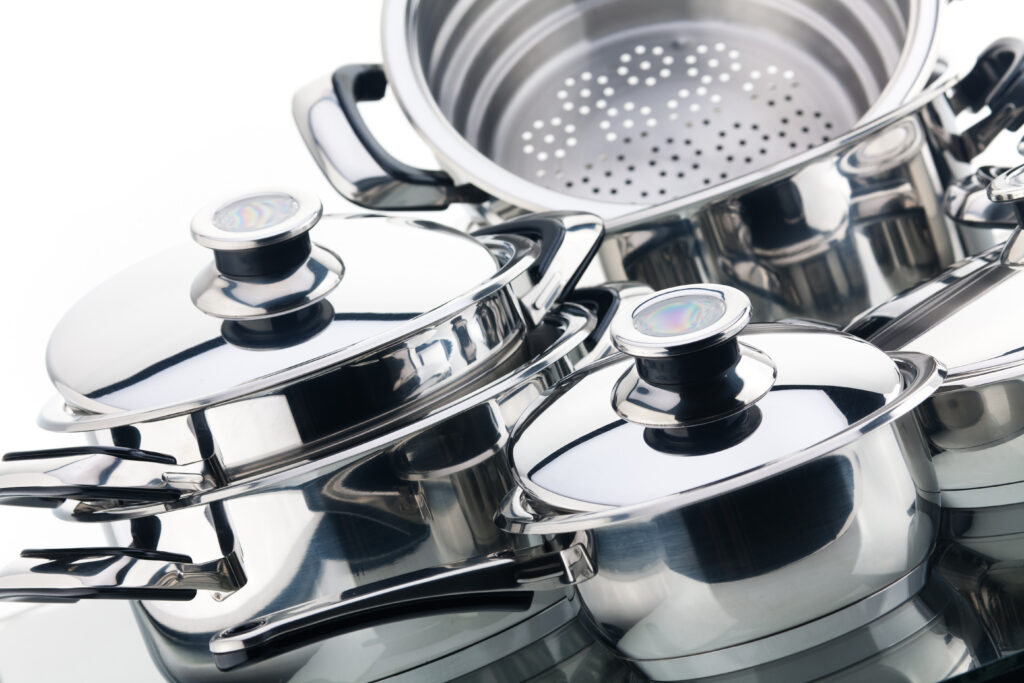
The diameter of the cooking surface determines the size of a fry pan. The most common sizes are 8, 10, and 12 inches. However, you can also find pans that are as small as 6 inches or as large as 16 inches.
What is the difference between an 8-inch frying pan and a 10-inch frying pan?: The difference between an 8-inch frying pan and a 10-inch frying pan is that the 10-inch fryer will hold about 30% more food than the 8-inch model. In addition, the larger size may make it easier to cook for multiple people.
What is the difference between an induction fryer and a regular fryer?: An induction fryer uses electromagnetic energy to heat food, while a regular fryer uses gas or electricity to generate heat. Induction cooktops are more energy-efficient than their traditional counterparts because they transfer heat directly to the pot or pan rather than heating the entire cooking surface.
How to get the diameter measurement of your frying pans to ensure that they fit your lids?
With tight-fitting lids, cooking pots allow maximum energy and time efficiency. Without the heat spilling out, the contents of the pots will cook faster and more evenly
Here are three easy steps you can follow:
Step 1
Place the pot on a flat, level surface.
Step 2
Measure the circumference of the pot, starting from the inner rim of the pot and going directly across the diameter. Take the final measurement from the outside of the pot.
Step 3
To buy a lid, measure the pot’s diameter and buy a lid corresponding to that circumference.
What frying pan size is best for me?
Often the only thing you need to consider when deciding between fry pan sizes is, “What’s the smallest possible pan I can use without risking overcrowding?” The prevention of overcrowding should be the first order of business before deciding on the appropriate size.
However, there are some cases in which having a larger or smaller-sized pan matter for more than just the volume of what’s being cooked, such as the size of the food being cooked, the number of ingredients being cooked, and the specific cooking method being employed
8-inch frying pan
Benefits of this pan size:
A smaller frying pan means more evenly distributed heat and the ability to reach high temperatures due to collateral heat exposure from the pan’s sloped sides.
Commonly used for:
One fried egg, steak, or chicken breast is a great breakfast choice. Making a thick, fluffy omelet, sauteing vegetables, and making toasts are other ways to personalize your morning.
10-inch frying pan
Benefits of this pan size:
A medium pan means a middle ground where more things can fit in the pan without overcrowding with a minimal sacrifice of heat retention.
Commonly used for:
Frying three eggs or two chicken breasts, frying latkes, reheating leftovers, or sautéing many vegetables.
12-inch frying pan
Benefits of this pan size:
A large frying pan means a large amount of food can be cooked in it at once without overcrowding the pan, and it will also mean excellent heat retention, as there is more material available to hold heat.
Commonly used for:
Frying four eggs or three chicken breasts, frying bacon strips without having to trim the ends, making a pan pizza, galette, or Dutch baby (12-inch ideal size for baking pans).
What matters more, the material or size?
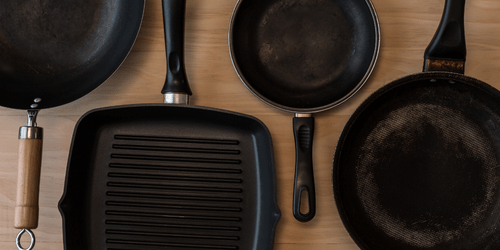
Although many factors can influence a large skillet purchase, one of the most important things to consider is the material and size. Therefore, the size and material are typically the first two criteria for selecting a pan.
The following list of the most common frying pan materials: stainless steel, ceramic, and silicone.
- Stainless steel: The classic all-around pan can accomplish various kitchen tasks, including sautéing and pan-frying.
- Nonstick pan: Due to their nonstick coating, they are an ideal option for cooking delicate foods that tend to stick, such as fish and fried eggs.
- Carbon Steel Frying Pan: Heavy duty and perfect for accomplishing stovetop and grill sears, chars, and crispy textures.
- Cast iron skillet: Similar to a stainless steel pan, except it seasons slower, doesn’t conduct heat as well, and is less reactive to changes in temperature.
One of the major considerations when purchasing an item such as pots and pans is that it must have certain features. For example, the material should be oven safe, have a stay-cool handle, and include a lifetime warranty to protect against defects.
How do I choose the best frying pan with lid?
To choose the best frying pan with a lid, you should look for a non stick pan set that does not release harmful chemicals and is easy to clean. It’s also important for this frying pan to be dishwasher safe so that the outside is easy to clean and more convenient for you.
You may want to consider a pan lid when buying new pots and pans. If you are also trying to replace lost or broken lids, you may want to try to purchase matching pieces. One consideration that you should be aware of is the size. Another would be the material of the lid. Cost is a factor as well. Shipping can be expensive. The lids should fit the pans to a certain extent. The material it is made out of can also be an indication of the lid’s quality. Lastly, the space in the cupboard you use to store the pans must be considered.
Lids made of stainless steel, aluminum, and silicone can all be effective, although if you cook items that require frequent checking on, glass lid pans could make a great choice. Many high-end brands of pans can be found exclusively at particular department stores. These stores may have replacement lids available. Visit the website or call the store to see if they can be ordered online or via catalog.
When it comes to replacing pan lids for your everyday pots, you may also want to consider the issue of clutter and expense. Instead of purchasing an entire set of pan lids, you may want to choose a universal lid that fits most standard-sized pots and pans. A universal lid will sometimes have ridges in several measurements to fit the perimeter of various-sized pans.
To ensure that you obtain the appropriate size, measuring the pots and pans for which you plan to purchase lids is a good idea. First, be sure to measure across the center of the pan. Then, take measurements from one inside rim to the other.
Which lid is the right one?
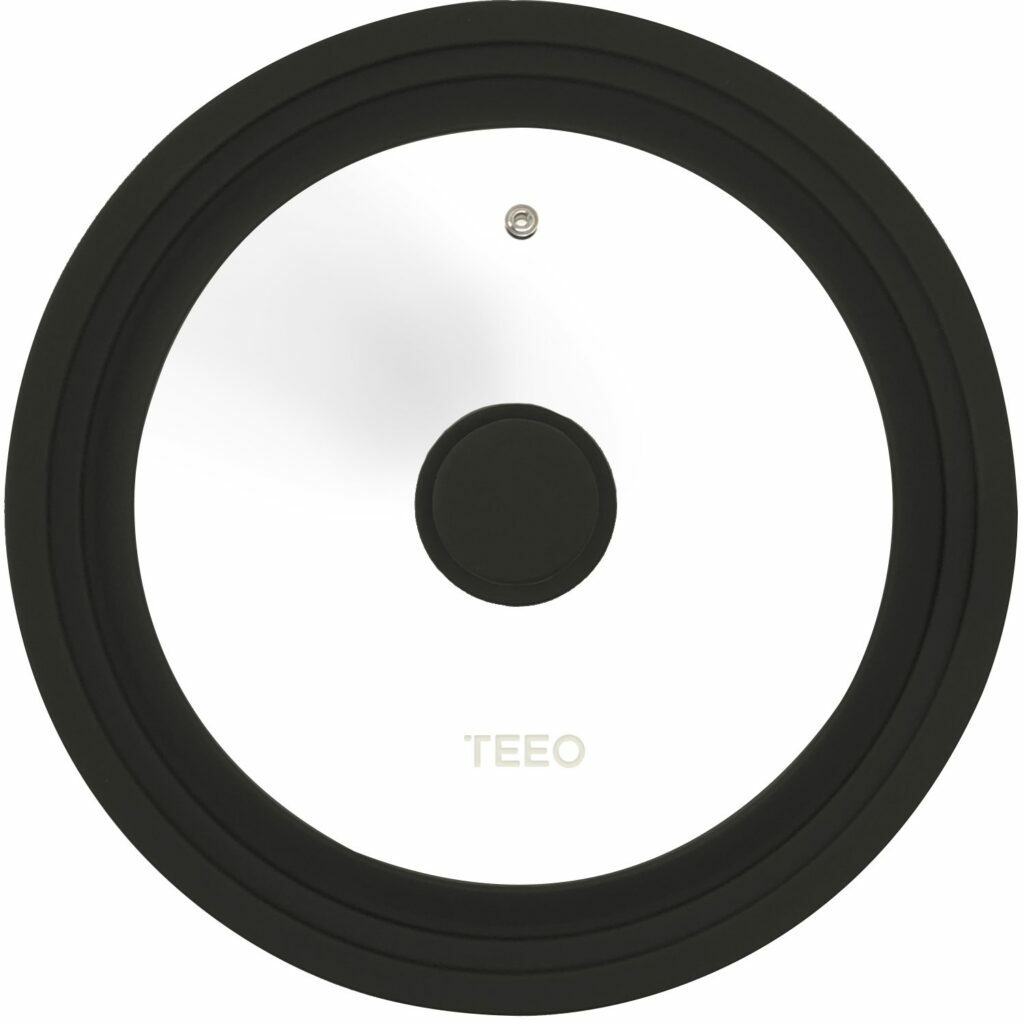
As of late, more and more people are favoring universal lids, making them the best type of lid for what you need. Metal lids are great for people who cook often and want to protect their pots and pans. Glass lids are great for people who don’t want to ruin their cookware and want to dry food out completely. Silicone lids are great for people who don’t want to ruin their pans.
Lid types by application
Choosing the right lid for your storage needs can be hard, but it’s important to find one that suits your business needs. Businesses will find that having several lid designs can save them time. In addition, having the right lid allows you to use the same food pans for storing, serving, and transporting your food. Regarding the two main purposes of lids, keeping contaminants out and providing a tight seal to help maintain freshness are important.
Lids with a flat surface area are the most popular option for storing food in food pans. These are most commonly made of stainless steel, polycarbonate, or polypropylene-all of which can withstand a wider range of temperatures. Polyethylene is also available.
Plastic snap-on storage lids with seals are available to help maintain product freshness and are offered in various shapes. Lids that fit more loosely will typically have central handles, while lids with seals usually have thumb tabs on their corners. These tabs provide an easy way to break the seal to remove the lid. In addition, the color-coded lids in the refrigerator can help employees easily identify what is inside.
The key to transporting food is preventing spills, particularly when the food being moved is liquid. Polypropylene and polycarbonate lids with inner seals are available to help minimize the chances of a spill. However, when less stainless steel or plastic lids without seals will usually suffice when transporting solid foods. Either way, a flat top or slightly recessed lid is preferred so food pans can be stacked for easy transport.
For serving food or storing products that need to be accessed regularly, the food in the pan should be inaccessible and well-protected but easy to access.
A flat lid is a lid for a cooking pan with no opening and easily fits locked in place. This lid type is usually made of rigid polypropylene, polycarbonate plastic, amber resin, or stainless steel. If the food requires a utensil for serving, a notch in the lid will permit it to stay in the pan with the lid on.
Domed covers allow users to stack dry food products, such as produce and bread rolls, above the lip of the food pan while keeping them covered. Hinged lids have a cut-out section that can be easily lifted to provide access to the pan’s contents while the rest of the lid stays in place. Domed covers allow you to stack dry food products, such as produce and bread rolls, above the lip of the food pan while keeping them covered.
What’s your favorite kind of lid? Do you like a handle or a hinged portion? Maybe you’re more into the roll cover. The choice is yours!
- The Benefits of Baking: Experts say baking reduces stress and anxiety - February 27, 2022
- Effective and Reliable Ways to Organize Bathroom Drawers - January 26, 2022
- Looking For a Frying Pan With a Lid: A universal lid for all your pots and pans - August 16, 2021

